When it comes time to choose a house cat, it may be that you have considered getting a breed that will grow to be quite large. Having a large cat can be a fun, and unique experience since most breeds are more active, powerful, and confident than their more normal-sized relatives. A large cat also tends to age more slowly, some not fully maturing until their fourth or fifth year, making them a popular choice among pet lovers across the globe.
Large cats are measured by length and height generally, not only because weight can be deceptive due to hair length but also because obesity should not be encouraged or ignored just because it is a “large” cat breed. Regular vet checkups will ensure that your pet is on track for its weight given its breed and prevent unnoticed weight gain.
Read below and learn about the biggest cat breed and all the big cats you can bring home.
12 Largest Domestic Cats
Maine Coon Cat
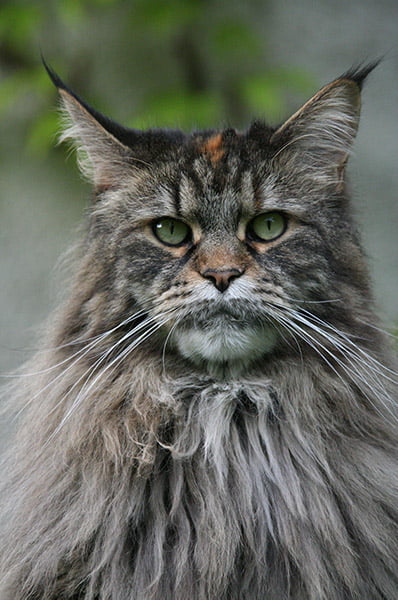
Maine Coons are the biggest cat breed of natural, non-hybrid cats. These gentle giants can grow to be quite huge, particularly in length, when you factor in the length of their long fluffy tails. Some Maine Coons have grown to be three feet or longer.
The average height for a Maine Coon is 10-16 inches. Their weight varies quite a bit since much of their weight comes from their shaggy, thick coat. They weigh anywhere from 10-25 lbs. This cat is a gentle giant with a calm personality, making them great household pets.
Ragdoll
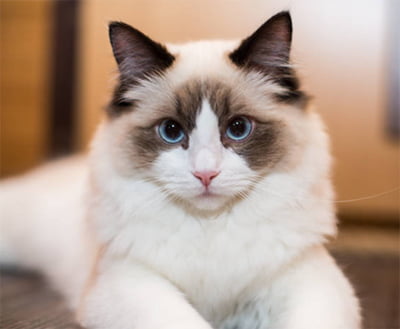
Ragdoll cats are large, cuddly, affectionate cats that get their name by how they go limp when they are picked up, like a rag doll. Generally, this house cat has a beautifully soft, light-colored coat with a darker face and tail markings. They grow to be 9-11 inches high and 10-20lbs. Like the other breeds on this list, ragdolls are highly sociable and intelligent cats.
Norwegian Forest Cat
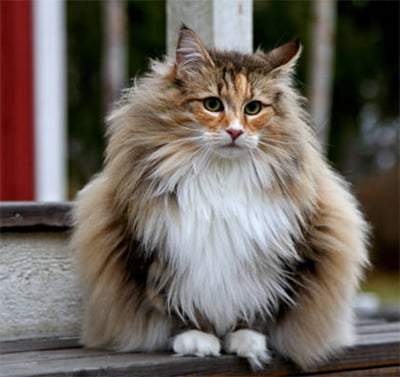
This big cat breed was originally bred from wild forest cats but, over the years, has become a loyal, incredibly playful, and smart breed of cat that is great for families. Norwegian Forest cats are long-haired, muscular cats that aren’t easily stressed out. As one of the biggest cat breeds, they may seem wild, but they are actually natural-born companion cats. With a dense coat to keep them warm and dry during northern winter, they have big yellow eyes and grow to be 13-20lbs and 12 inches tall.
Savannah Cat
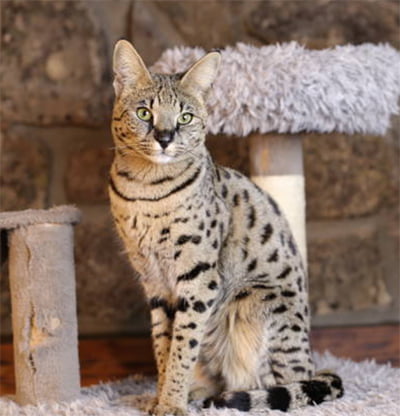
Savannah cats are the largest cat breed of all the large domesticated cat breeds reminiscent of wild cats. These cats were bred with servals, an African wild cat, and they are generally classified now by what percentage they are still wild. The closer they are to their African ancestors, the larger they will be.
These big domestic cats have large ears and a leopard-like appearance. They weigh between 12-25lbs and are between 10 and 17 inches tall when fully grown.
Ragamuffin
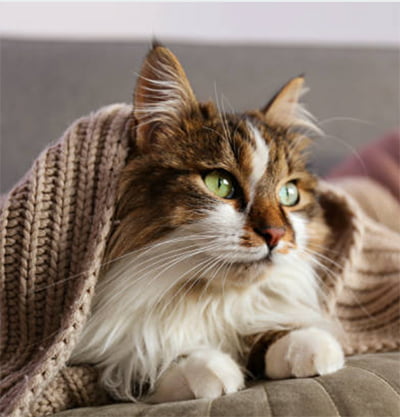
Ragamuffin cats are closely related to ragdolls but look quite a bit different. They still have that lovable, cuddly personality, but they have friendlier-looking faces than ragdolls and come in a lot more colors and coats.
Ragamuffins grow to be about 20lbs heavy and 9-12 inches tall. They are docile, mellow, large cats that get along well with other pets generally. Unlike most cats, they have no problem changing their normal routine.
Persian
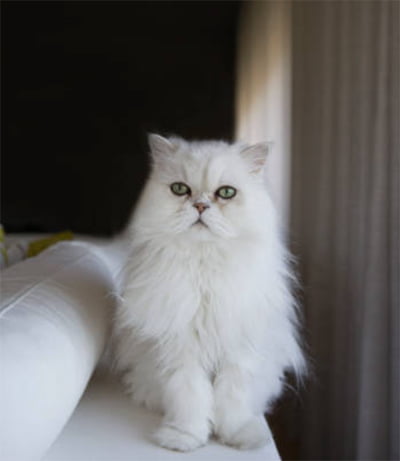
Persian cats are unique among the big cat breeds. These cats have round faces and short snouts, giving their faces a flat, smushed-up look. They are unique in that they are not active like most large cat breeds, and a Persian cat prefers lounging and sleeping overactivity. The average weight of these cats is between 7-12lbs, often looking bigger than they are because of their fluffy, long hair.
Chausie
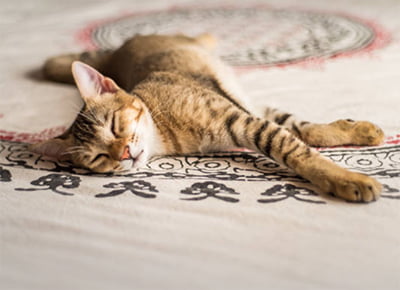
Chausie cats are a regal breed that originates in Egypt. These exotic-looking cats have a wild appearance and are smart and very active. They can grow to be quite tall at 14-18 inches and weigh about 15-20lbs full grown.
Bengal
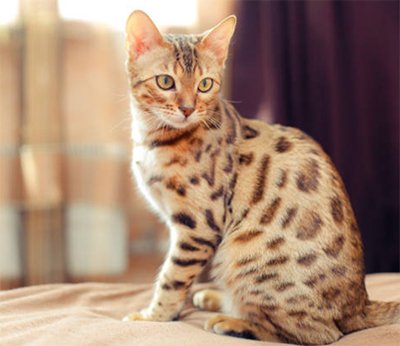
Bengal cats are another very exotic-looking domesticated breed of cat, and they very closely resemble wildcats like leopards with their patterned coats and athletic build. These cats also have what is called a “glitter gene,” meaning their coats can look luminescent in certain lighting.
Bengals are playful, smart, and loving cats despite looking incredibly wild. They can be just as friendly and loving as the other domestic cats. Except they will grow 8-10 inches tall and 15-18lbs heavy.
Siberian
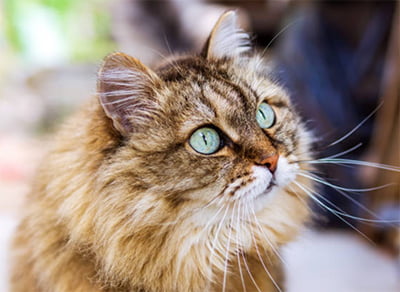
Siberian cats, known as Siberian forest cats, are stocky, intelligent, mellow, and affectionate. This big cat breed loves to play and loves to cuddle, making them perfect for cat lovers. But unlike many other cats, they are not clingy.
These Siberian cats also have an affinity for water, with a water-resistant coat due to the climates they originated in. A Siberian cat will grow 10-20lbs and 9-12 inches tall.
American Bobtail
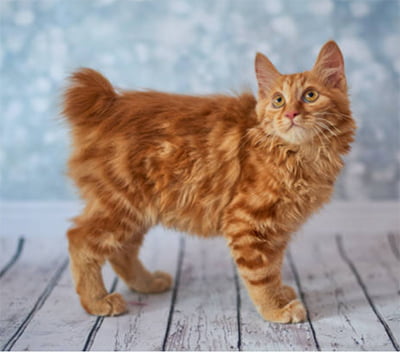
The American Bobtail is thought to have originated from the cross-breeding of a wild bobcat and a domesticated hunting cat. They come in various coats and colors and average sizes around 10 inches and 16 pounds. These cats are made unique by their short stubby tails.
American Bobtails are known for their love of games and can play fetch or hide and seek for hours. They will often initiate games with their pet owners and catch mid-air flying insects.
Turkish Van
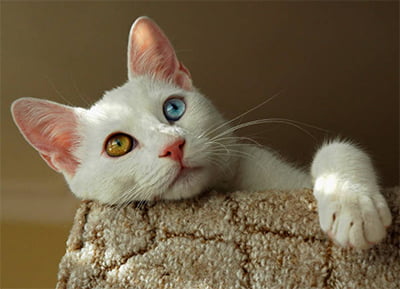
Turkish Van cats vary between 7-20lbs, so knowing the parents of a litter will be important in knowing the size of the cat you get. These cats are mostly white with marked tails and ears and, like Siberian cats, also enjoy swimming and the water. Many Turkish vans have curious personalities and are quite athletic, particularly strong jumpers.
British Shorthair
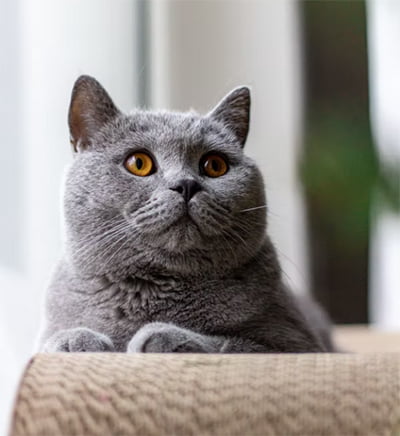
British Shorthairs were originally bred to be working cats to keep rats and mice out of barns and buildings. These cats have independent, undemanding personalities and may not always be the most cuddly.
They tend to be a bit shy, but they can warm up and be sweet companions with patience. The British Shorthair breed comes in various coat colors but primarily favors blue fur. They grow to be between 9-18lbs.
Natural Breeds vs. Hybrids
Of the largest domestic cat breeds, there are two distinct groups of cats, those that are naturally large breeds of domestic cats and those that are big due to being hybrid breeds with some percentage of a wild cat in their ancestry. Most of the largest cat breeds you can have as a pet are, in fact, part wildcat, having once been crossed with domesticated cats either accidentally or for pest control purposes.
Factors To Consider When Picking a Large Domestic Cat
When it comes to picking a big domestic cat for a pet, there are several things that you should consider.
Space
A big house cat will tend to be more active, so you will need to ensure the space and safety of your home for a bigger cat that can potentially get into more trouble.
Engagement
Because large cats are highly intelligent animals, they require both physical and mental stimulation to stay happy and out of trouble. More so than small cat breeds. Consider cat towers, cat shelves, food puzzles, and plenty of cat toys to engage your large cat.
Other Family Members
You should also factor in any additional pets or small children. Most popular cat breeds are lovable and hardy and make good family pets, but you will want to ensure that you provide a safe environment for everyone.
Breeders
Lastly, you should ensure that you do due diligence when finding a breeder. Choosing a breeder who practices ethical and humane breeding is very important.
You may also want to ensure that both parent cats are pedigreed or registered, so you know exactly what you are getting. You will want to see both parents before picking a kitten so you know how large your cat could get and what its temperament might be.
In Closing
Large breed cats are some of the best options for even, lovable temperaments regardless of whether they are purebred or mixed breed. They tend to be more active and busy than smaller breeds, making them more funds engaging.
Always be sure to take your cat to the vet for regular checkups to ensure that its weight stays managed and any potential health issues are caught early to enjoy your pet for many long and fulfilling years.
While The Pet Staff provides information resources and education, it does not intend to provide veterinary advice.
